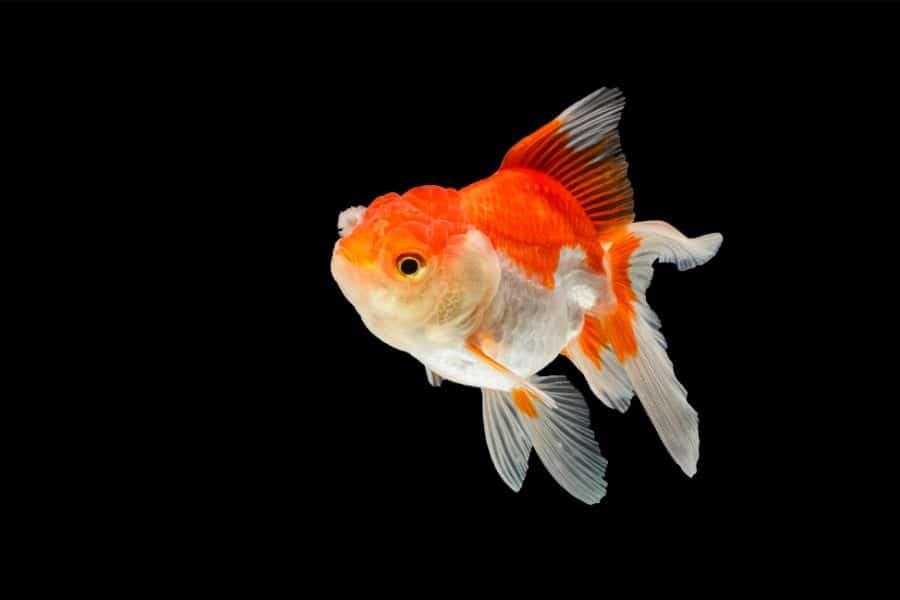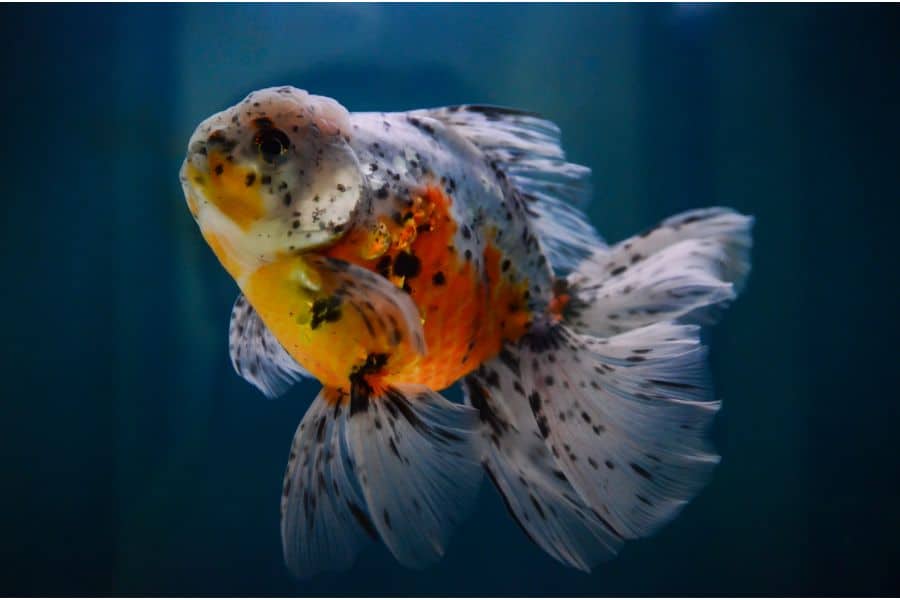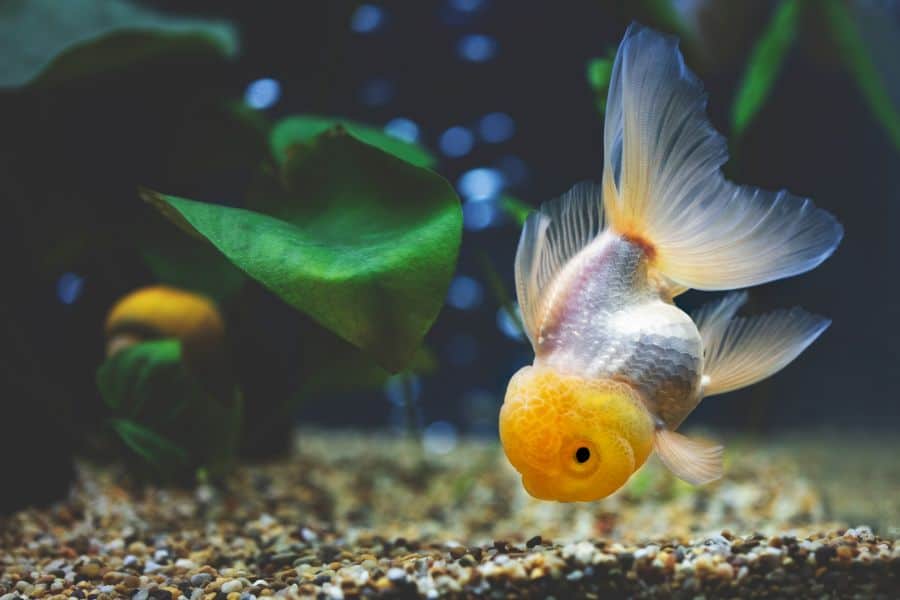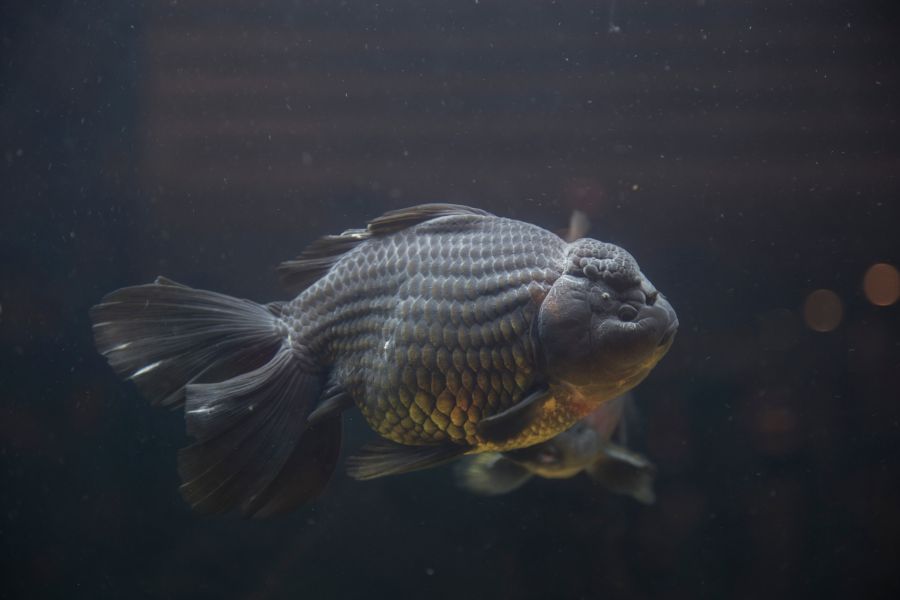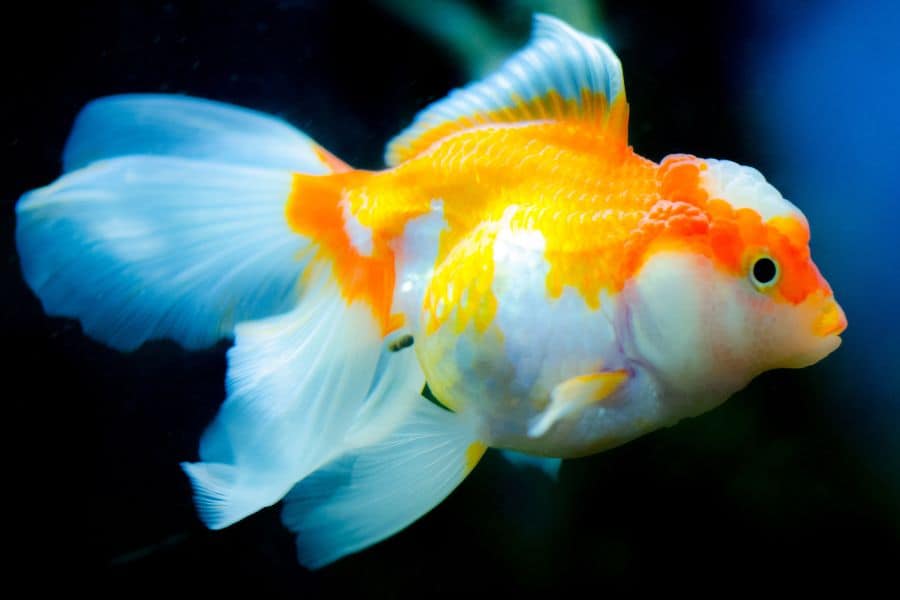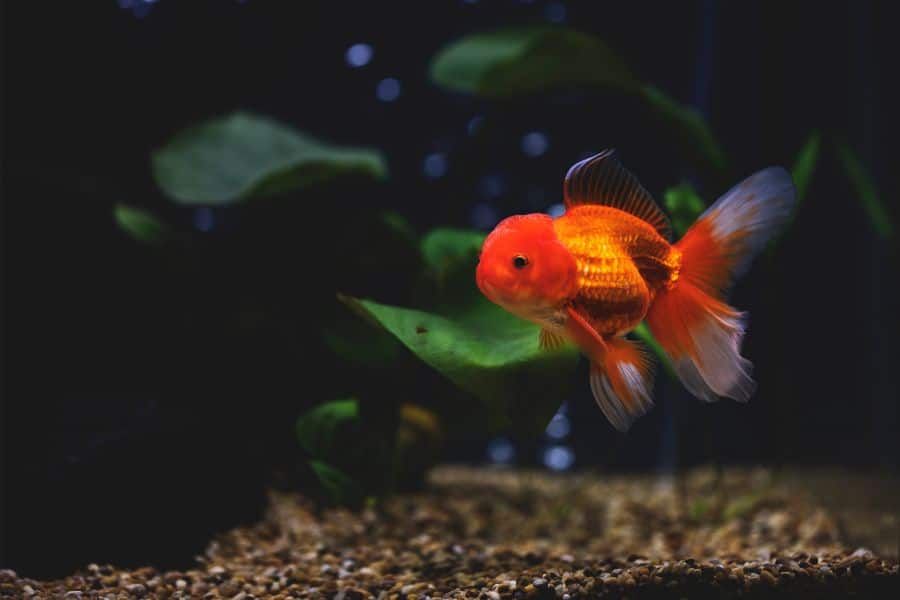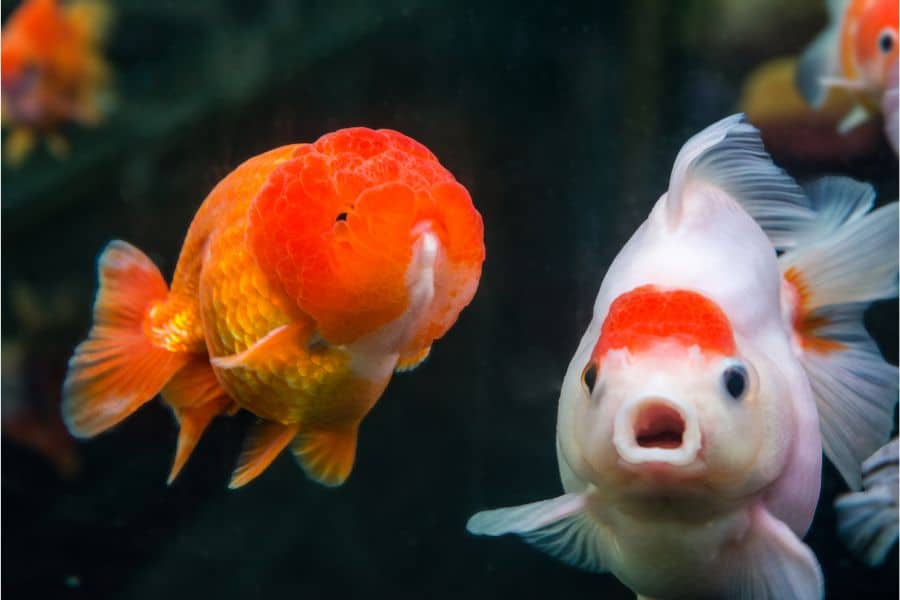Today, there is a wide variety of goldfish available, and more are being created through selective breeding. Despite being one of the older breeds of goldfish, Orandas are still pretty popular and coveted by hobbyists.
On the downside, the Oranda goldfish is not a simple fish to care for, but it certainly deserves the effort. Then again, it can be extremely frustrating when you put a great deal of effort into its care and nothing works.
That’s why you can’t just rely on any blog you find on the Internet; you have to know what you’re doing.
Throughout the process of writing this care guide, I interviewed outstanding Oranda groomers and breeders. It makes sense to learn from the experts, right?
At the end of the article, you’ll be able to evaluate yourself and determine whether or not you’re capable of keeping this high-maintenance fish.
Oranda Goldfish Overview
| Scientific Name | Carassius auratus (no particular scientific name) |
| Size | 8 to 9 inches |
| Life Expectancy | 7 years |
| Temperament | Passive and gregarious |
| Diet | Omnivorous but thrives best in a high-protein diet |
| Tank Size | 25 gallons for each fish |
| Tank Temperature | 28℃ – 30℃ (82.4℉ – 86℉) |
| Water Hardness | 5 – 19 dGH |
| Water pH | 5 – 8 |
Natural Habitat and Origin
The goldfish is a symbol of wealth in ancient China. At social events, hosts would show off their best fish in small vessels, the predecessor of the goldfish bowl.
In time, new variations were raised, which included what we now know as Orandas.
China has held goldfish contests for a long time, and other Asian countries have followed suit, including Japan, Thailand, and the Philippines.
Every year, these countries host prestigious goldfish beauty pageants where hundreds of fish compete for the crown.
Oranda Goldfish Size
A full-grown Oranda goldfish measures 8 to 9 inches, although its tail fin makes up most of its entire length. Note this is just the average, as some Orandas can grow much larger.
The biggest Oranda goldfish documented is Bruce the Red Oranda, which belongs to Hongkongers Jackie and Louis Chan. Bruce has reportedly measured 14 inches in length.
Lifespan
Seven years is the maximum lifespan of an Oranda goldfish. Even proficient aquarists find it difficult to lengthen the life expectancy of the fish.
You might encounter some hobbyists saying that pump feeding and increased temperature only shorten the lifespan. These are baseless statements, and following these against my advice will only put your fish in danger.
Appearance
Orandas have short, globular bodies with smooth outlines. Some varieties have shimmering metallic scales, while others look matte. Albeit smaller, they look bulkier than common goldfish.
Standard Orandas have split tail fins with trailing edges. The veiltails flow gracefully like silk, especially when the fish rest. Ideally, an Oranda’s caudal fin should be 3/4 of its body length to compete in grooming events.
Moreover, this fancy goldfish features symmetrical pairs of fins, except for its erect dorsal fin.
Most Striking Feature
Identifying the Oranda goldfish is a no-brainer due to its raspberry-looking hood or wen, as the Chinese call it. This fleshy growth may cover the entire face of the fish, except for its mouth.
Should you wish to join goldfish pageants, the wen should develop in the cranial, infra-orbital, and opercular areas. The wen, however, does not take shape until your fish is about three to four months old and it will continue to grow for two years more.
Given the best conditions, your Oranda goldfish will start looking its best by the time it reaches 7 months of age.
Temperament and Behaviors
Living without a care in the world, Orandas will just eat and eat until they decimate the food supply and cause your pockets to run dry. Their appetite is their god!
Kidding aside, Orandas are gentle, docile fish that will interact with their owners. These fish are intelligent and like to hang around with other Orandas.
Types of Oranda Goldfish
The goldfish industry in Asia has pulled out all the stops to produce new exquisite variants. New names and terminologies have been popping around for the purpose of nomenclature.
While a few newcomers made a big splash in recent years, the following Oranda varieties will forever remain a classic.
Calico Oranda Goldfish
These Orandas are named as such since they feature a festive calico pattern. Each fish comes with random white and black spots, along with a confetti-like mix of orange, red, and yellow. The speckles often extend to the fins.
Red Cap Oranda Goldfish
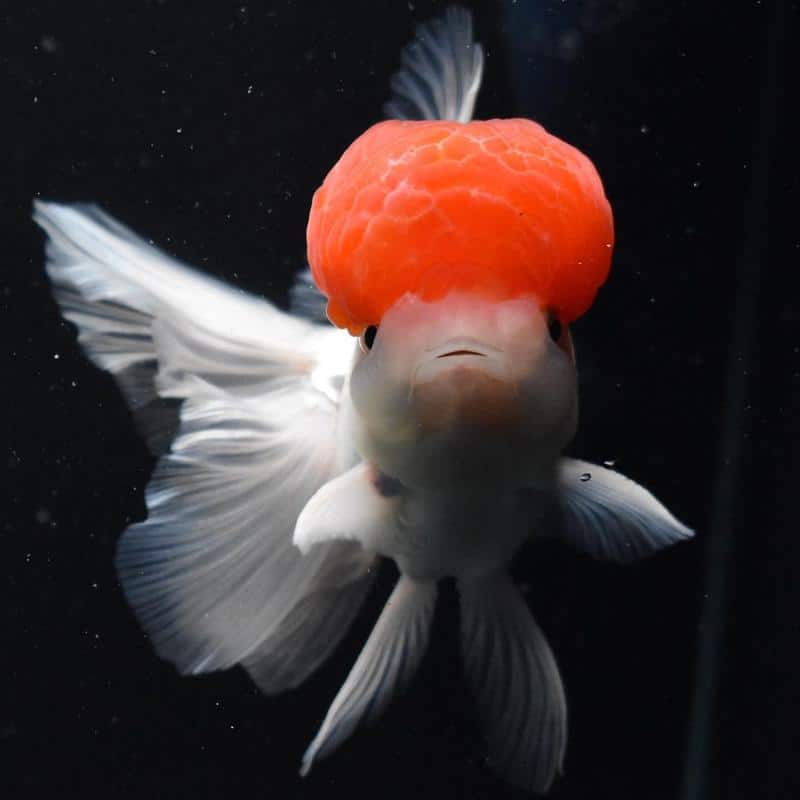
The Red Cap Oranda is perhaps the second most iconic Oranda variant next to the Calico. You can easily spot one even from afar. The fish has a platinum white body with a bright red wen.
Lemon Head Oranda Goldfish
Lemon Heads are ghostly white and as the name suggests, come with a yellow head.
Black Oranda Goldfish
Black Orandas are black with golden highlights, akin to the Black Moor goldfish. The metallic sheen looks more intense under bright lighting. In some fish, the golden highlights extend to the fins.
Black Thai Oranda Goldfish
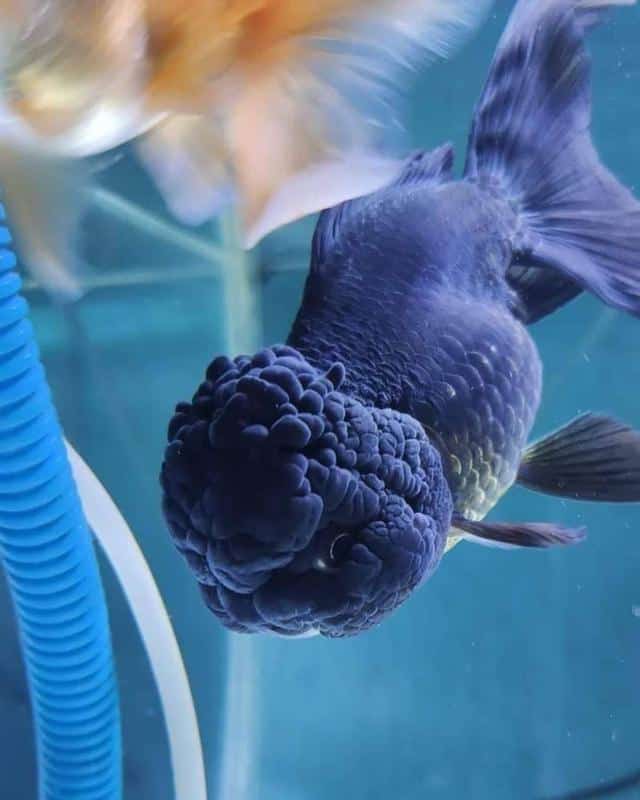
Black Thai Orandas are velvety black. These goldfish are full matte black.
Panda Oranda Goldfish
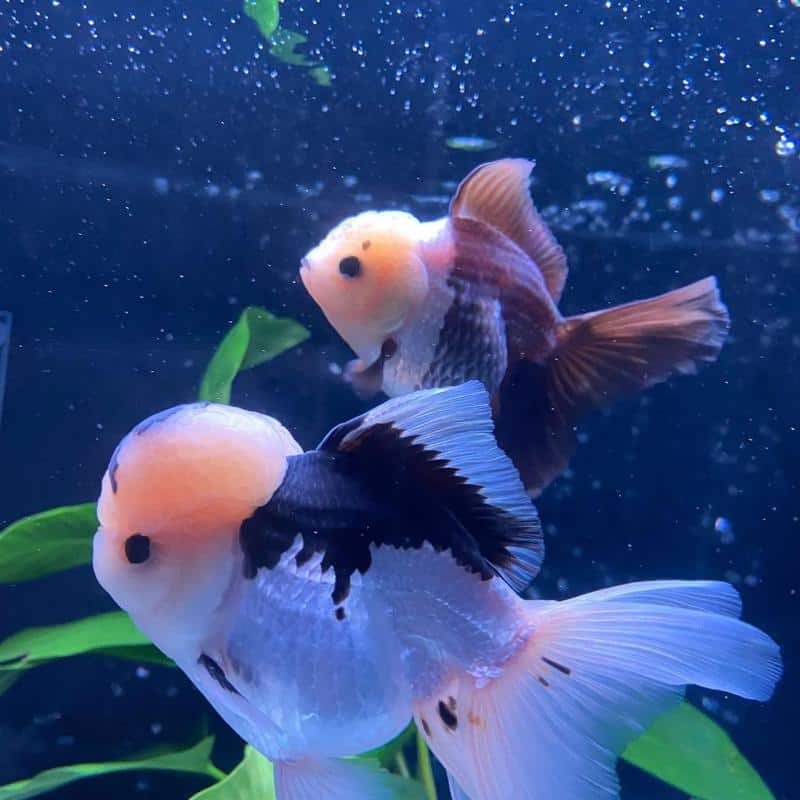
Panda Orandas are easily identifiable. Just like the mammal they are named after, these goldfish are black and white. As they are rare, they are more expensive.
Jade Seal Oranda Goldfish
Jade Seals are red-orange Orandas that either have a white or pale yellow cap.
Blue Oranda Goldfish
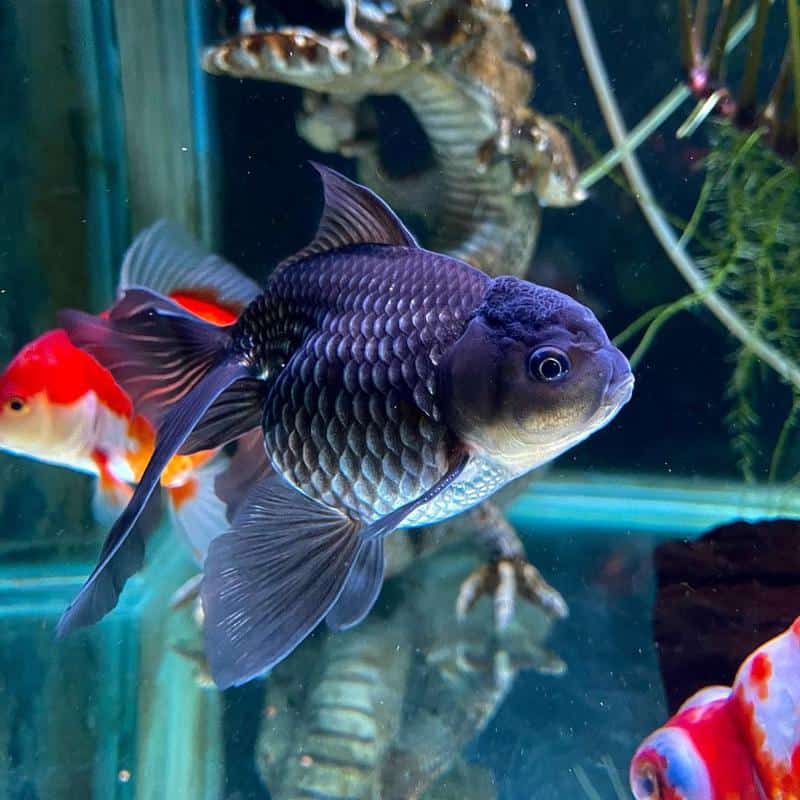
Blue Orandas aren’t really blue but bluish-black with silver-gray highlights.
Chocolate Oranda Goldfish
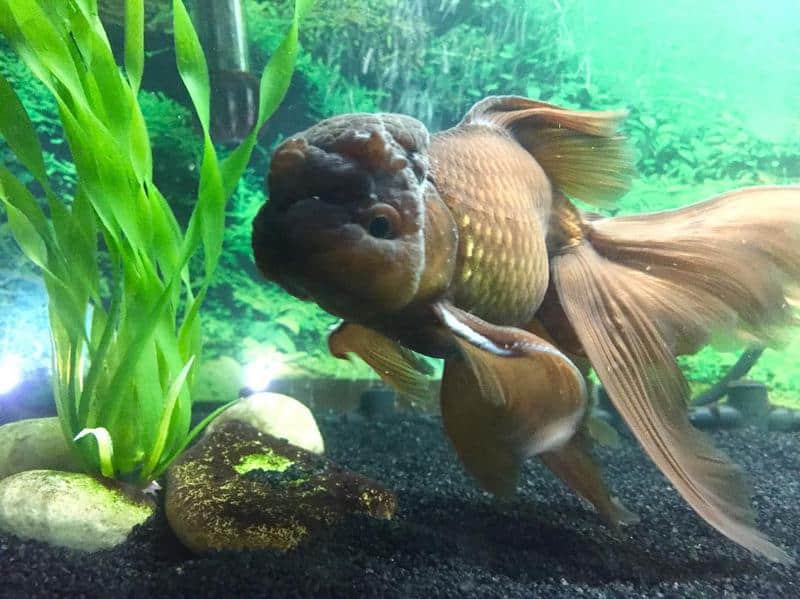
The US and other English-speaking countries call this variant Chocolate Oranda. While this variant does appear brown, its actual Japanese name is Chakin, which means “tea goldfish.”
What Type of Tail Does an Oranda Goldfish Have?
While original Orandas come with long trailing tail fins, newer variants can either have short or broad tail fins. These attributes are the product of selective breeding.
Orchid, rose, and peacock tail fins are categorized as broad tail fins. As the name implies, the orchid tail resembles the flower it is named after. The caudal lobes are circular and when they fan up, they form orchid-like petals.
Rose and peacock tail fins are used interchangeably. Both terms refer to the long flowing tails that have ruffling in the ends and these tails open widely.
Oranda Goldfish Tank Setup
Oranda goldfish are high-maintenance. Before you buy one, be sure to invest in the proper equipment.
Tank Size
People share conflicting suggestions across the Internet regarding the ideal tank size for the Oranda goldfish.
But if you ask the experts, 25 gallons is the minimum for one Oranda, granting that your fish doesn’t share space with other species. Double the volume for each goldfish you add.
Oranda goldfish produce a massive bioload. The water quality in a small tank will degrade rather quickly even with an efficient filter system.
Plants and Decorations
Skip out on decorations. Orandas couldn’t care less if their tank is void of color, as long as their water remains pristine.
By the same token, Oranda goldfish don’t require places to hide. These confident fish prefer to swim across all levels of the water column.
Poor eyesight is the main reason why you should exclude decorations. In some variants, the wens can grow so large to the point of obstructing the fish’s vision.
But if you really wish to add some decor, keep it minimal. You can use smooth stones or ceramic aquarium pots to hold live plants, such as:
- Anubias (Anubias barteri, Anubias coffeefolia, and Anubias congensis)
- Windelove (Microsorum pteropus)
- African fern (Bolbitis heudelotii)
Funnily enough, these graceful-looking fish are clumsy. They can find plenty of ways to get stuck. The wen and fins can get easily snagged.
Substrate
Adding fine sand or smooth pebbles can spruce up your tank, but substrates aren’t important. Your Oranda goldfish will not benefit from it.
Equipment and Accessories
Aside from a freshwater testing kit and miscellaneous cleaning tools, here are some equipment you can never do without.
Filtration
Fishkeeping enthusiasts know how important it is to have a good, reliable filter in their aquariums. As well as providing a clean and healthy environment for the fish, aquarium filters also provide a home for beneficial bacteria.
If you can build a sump filter and use high-quality media, then it will be just as efficient as a canister filter. Canisters are more expensive and not customizable, but they are definitely superior in terms of filtration.
Thermometer and Heater
Even if you live in a tropical country, you will need a heater to ensure the temperature stays steady throughout the day. It is best to use a submersible heater since it keeps the tank temperature uniform and is not exposed during partial water changes.
Tanning Light
Orandas are happy in sunlight. Improved coloration is an indication that they are positively thriving.
But if you are keeping your tank indoors, then you will need the help of a tanning light. Understand that without a tanning light, pump feeding will alone not suffice to groom your fish.
On the downside, having a tanning light costs money to run.
UV Sterilization Pump
Whether you’re placing your tank near a window or using a tanning light, algae problems will occur. You need a UV sterilization pump to eliminate algae and harmful microorganisms.
Water Parameters and Maintenance
Take note; Orandas are much more sensitive than common goldfish. Every day, you need to allocate some time to keep the water in pristine conditions.
Water Hardness and PH
Oranda goldfish fare best in a carbonate hardness of 5 to 19 degrees. The best pH sits anywhere between 5 to 8.
Water Temperature
Goldfish are notable for their ability to survive frigid waters in ponds and lakes. These fish survive hard times by going into torpor.
Truly, goldfish can live in an unheated tank. However, Orandas are not your ordinary goldfish.
Oranda goldfish thrive best when the water is warm, ideally between 28 to 30 degrees Celsius (82.4 to 86 degrees Fahrenheit.)
Water this warm promotes metabolism, which is crucial when you are grooming your fish.
Water Changes
Here’s the thing. Some aquarists suggest performing a daily 30 percent water change while others suggest a 70 to 90 percent water change every week.
Both methods are acceptable, but large-scale water changes by the week can be problematic for beginners. This is particularly true if your tap water is not the greatest.
You’ll have to take additional measures to ensure the water parameters are consistent between the new and old water in the tank. Otherwise, you’ll risk distressing your fish. Worst case scenario, your fish could die of shock.
For this reason, breeders and groomers prefer to do a daily 30 percent water change, as it provides more stable conditions compared to a weekly interval.
But if you are grooming your Oranda, replace 40 to 50 percent of the tank water every day, especially if you are pump-feeding your fish every two to three hours.
Lastly, never overlook the importance of using a water conditioner.
Oranda Diet and Feeding
It’s funny how some aquarists talk about “replicating a goldfish’s diet in the wild.” Orandas aren’t meant to live in the wild, and they will not survive there.
Oranda goldfish are bred to compete in beauty pageants, which has become a long-running tradition in Asian countries. This species is rather sensitive.
Unless you are content with seeing this exquisite fish wither away instead of reaching its full potential, you can just dump cheap dry food and mixed vegetables into its tank.
So, what should you feed your Oranda goldfish?
Here are the three best commercial food for Oranda goldfish, as per advised by expert breeders and groomers:
- Hikari Saki Premium-Grade Fancy Goldfish Food
- HULX SUPER RED 60 Huge and Colorful Gain
- HULX PROTEIN 60 Muscle and Mass Gain
If possible, you should get all three. I guarantee these foods will satiate your fish and provide them with complete nutrition, so they will look their best and remain in tip-top condition.
As you may have noticed, these recommendations are sinking pellets. Does it mean flakes are bad for Oranda goldfish?
Feeding your Orandas flakes may not cause immediate health effects, but it increases their risk of swim bladder disease.
Once in a while, feed your fish with steamed eggs mixed with vitamins or a color enhancer of your choice. Instead of live foods, it is better to feed them with steamed eggs because live worms may carry bacteria.
You don’t want to risk your fish getting bacterial diseases, especially for a fish this expensive.
How Often Should I Feed Oranda Goldfish?
Feed your Orandas at least four times a day. Yes, you read it right — at least.
If your fish is still growing or you are grooming it for a show, it is wise to feed it up to 10 times a day.
Can you overfeed your Oranda goldfish? You won’t as long as you keep the water within the recommended temperature.
The only time you should minimize feeding is when the cold season arrives or when it is raining consecutively for days.
Oranda Goldfish Tankmates
Orandas look beguiling, so it’s no wonder hobbyists want to mix them in a community tank as a centerpiece fish. However, these gorgeous goldfish are not suitable in a typical community setup.
Housing them with small rambunctious fish puts them at risk of getting nipped. When it comes to feeding, Orandas cannot compete with large and more agile fish.
On the bright side, you can keep these gregarious fish with other slow-moving fancy goldfish like Pearlscale, Lionhead, and Ranchu.
You can keep one or two of each species together as long as they have sufficient space to swim and you can keep up with the maintenance required.
Breeding Oranda Goldfish
Breeding Orandas is quick and easy, as long as you condition your fish beforehand and ensure you gather the right supplies.
Difference Between a Male and Female Oranda Goldfish
Checking the genital papilla is the easiest way to sex your Orandas. Females have rounder protruding tubes, while male papilla looks less prominent and rather sunken.
Moreover, females appear thicker than males, especially if you look at them from above. Orandas are already fertile when they reach five months.
When Will I Know My Oranda Goldfish Is Ready to Breed?
Females holding eggs will look plumper than usual due to their swelling bellies. As for the males, white tubercles appearing on their undersides indicate their readiness and viability to spawn.
How Do I Set up An Oranda Goldfish Breeding Tank?
You can breed your fish in the same 5-gallon or 10-gallon tank you prepared for raising fry. If it is larger, you will want to use a small basin, instead.
A small tank allows the female to bond quickly with her chosen mate. Most importantly, it is more manageable.
Aside from the tank, you will need to make a nest. You can throw in some Cabomba (Cabomba caroliniana) or Hornwort (Ceratophyllum demersum). If you don’t have any of these floating plants, you can use artificial breeding grass.
And remember, the water should sit for 72 hours before you introduce your fish. You will also need an airstone.
Things You’ll Need:
- A small tank
- Floating plants or artificial breeding grass
- Water conditioned for at least 3 days
- Airstone
How I Breed Oranda Goldfish?
There are two methods of breeding Orandas: natural and manual. Regardless of which method you choose, you should always transfer your fish into a small tank to ensure success.
Place the female inside the breeding tank one day ahead of the male. Then leave your fish alone for two days as they engage in courtship displays.
A female ready to spawn will have a softened abdomen. Gently press the swollen area with your thumb towards its genital papilla to release the ripe eggs.
Do the same thing to the male. Sperm will travel along the ripples created by the airstone, thus causing them to get mixed in with the eggs.
Once the male stops chasing the female, you can pull them out of the breeding tank. Wait for 24 hours before you change the water.
Is it safe to do a complete water change? Yes! The eggs will adhere to grass and tank walls.
Mix the new water with methylene blue and let it sit for at least three days before adding it to the tank.
Should I Change the Water in The Fry Tank?
Yes! Perform a 20 percent water change every two weeks after the eggs have hatched.
However, it is advisable to wait 7 to 10 days before you do your first water change. Waiting this long will ensure your fry has bulked up, so you won’t lose some of them during the process.
What Is the Best Food to Feed Goldfish Fry?
Daphnia is the best food to feed to a newly hatched fry if you are trying to minimize expenses. But if you can afford baby brine shrimp, the better.
Feed the fry daphnia or baby brine shrimp for 10 to 14 days. From then on, they can eat tubifex.
As long as possible, you’ll want to feed these young fish live foods to ensure their development. Feeding live food is better, especially if you have plans to groom your fish in the future.
Alternatively, you can give them homemade steamed eggs mixed with spirulina powder.
All you need is 1 part egg mixed with 1 part water and a teaspoon of spirulina powder. Steam the egg mixture on high heat for two minutes for a runny texture.
High-protein steamed eggs boost immunity and enhance coloration.
Also Read: What Do Goldfish Eat?
Diseases
Orandas are one of the hardest goldfish species to keep due to their hypersensitivity to poor water quality. These fish can get Ich and red spot disease rather easily, especially if you aren’t consistent with the water upkeep.
It is crucial to follow the recommendations above. Keeping up with daily maintenance and taking a proactive approach will likely protect your fish from illness; this holds true if your fish are fed the right diet and basked in the sun. Sunlight is medicine for Orandas.
To avoid swim bladder disease, omit flakes in your fish’s diet. Flake feeding causes your Orandas to gulp air as they eat.
Read More:
Wrapping Up
Whoever said that Oranda goldfish are easy to care for hasn’t done his homework. Orandas aren’t your ordinary goldfish.
The fancy goldfish doesn’t have a lot in common with more common species of goldfish regarding care. First off, their diet can be pretty expensive in the long run.
Moreover, you’ll need to invest in the right equipment and carry out routine maintenance day by day. Orandas have little tolerance for unstable and poor water conditions. No matter what, you should always make it a priority to deter anything that will compromise the water quality.
There is a saying that if you take good care of the water, the water will take your fish. This holds true for the Oranda goldfish.
